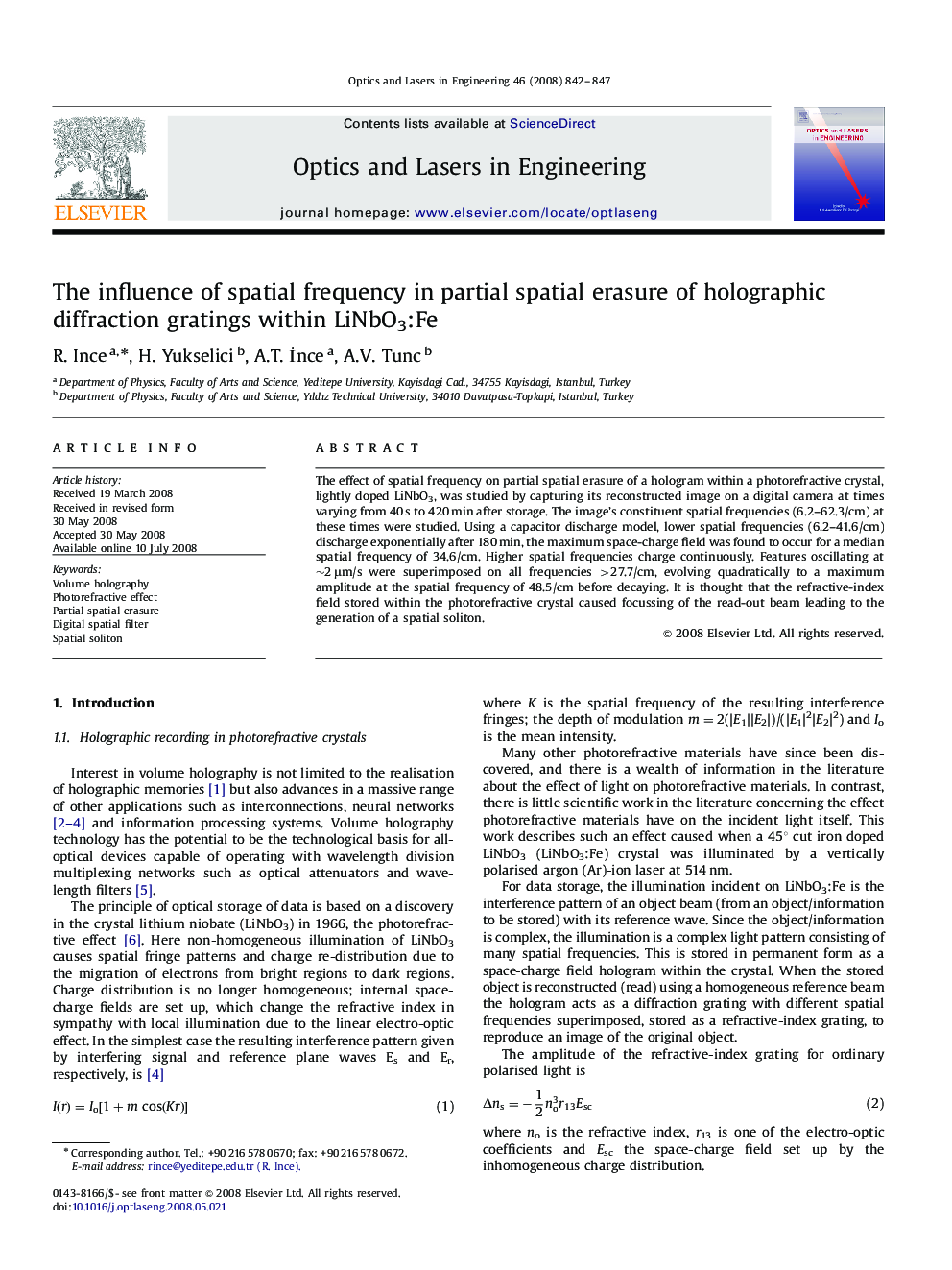| Article ID | Journal | Published Year | Pages | File Type |
|---|---|---|---|---|
| 735539 | Optics and Lasers in Engineering | 2008 | 6 Pages |
The effect of spatial frequency on partial spatial erasure of a hologram within a photorefractive crystal, lightly doped LiNbO3, was studied by capturing its reconstructed image on a digital camera at times varying from 40 s to 420 min after storage. The image's constituent spatial frequencies (6.2–62.3/cm) at these times were studied. Using a capacitor discharge model, lower spatial frequencies (6.2–41.6/cm) discharge exponentially after 180 min, the maximum space-charge field was found to occur for a median spatial frequency of 34.6/cm. Higher spatial frequencies charge continuously. Features oscillating at ∼2 μm/s were superimposed on all frequencies >27.7/cm, evolving quadratically to a maximum amplitude at the spatial frequency of 48.5/cm before decaying. It is thought that the refractive-index field stored within the photorefractive crystal caused focussing of the read-out beam leading to the generation of a spatial soliton.
